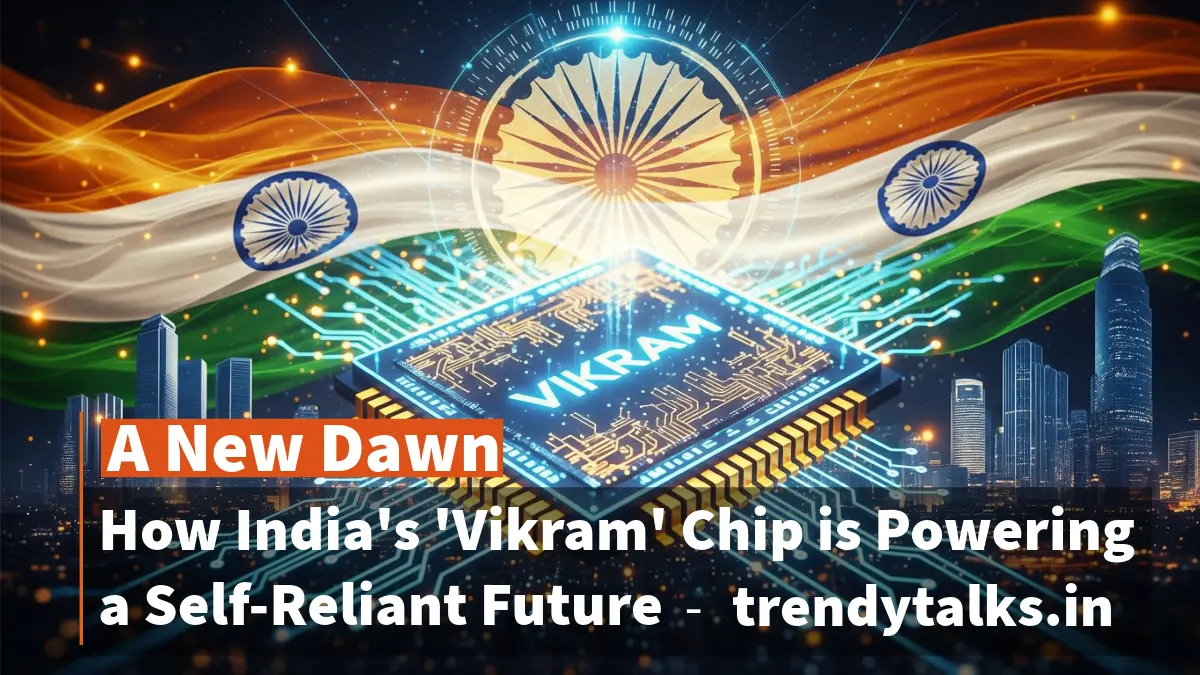For decades, the global technology landscape has been defined by a handful of players and a complex, often fragile, supply chain for the most critical component of all: the semiconductor chip. From our smartphones and cars to our satellites and defense systems, these tiny “digital diamonds” are the brains behind modern technology. And for a long time, India was largely a consumer, not a producer.
That is, until now.
India has achieved a historic breakthrough with the introduction of ‘Vikram,’ the nation’s first indigenously developed 32-bit microprocessor. Presented to Prime Minister Narendra Modi at the Semicon India 2025 conference, this is more than just a piece of silicon; it is a powerful symbol of a nation’s resolve to achieve self-reliance and become a global leader in the semiconductor industry.

What is the "Vikram" Chip?
Developed at ISRO’s Semiconductor Laboratory (SCL) in Mohali, Punjab, the Vikram-32 is a cutting-edge and sophisticated 32-bit microprocessor. While its launch signifies a national milestone, its origins are rooted in a specific and demanding application: space.
The chip is specifically designed to withstand the brutal conditions of space launches, including extreme temperatures ranging from a frigid -55°C to a scorching 125°C. Its robust design and specialized architecture make it a successor to the 16-bit VIKRAM1601 processor that has been used in ISRO’s launch vehicles since 2009. The first batch of these devices was even validated in space during the PSLV-C60 mission, proving its reliability and readiness for future space missions like Gaganyaan and Chandrayaan.
A Strategic and Economic Game-Changer
The launch of Vikram is a testament to the success of the “India Semiconductor Mission,” a government initiative launched in 2021 with significant financial incentives to attract global investment and foster a domestic ecosystem. In just over three years, India has moved from being a primary consumer of advanced chips to a producer.
Take a quick look for more insights about the 'Vikram' chip -
This shift has profound implications:
Strategic Independence: By designing and manufacturing its own chips, India significantly reduces its dependence on foreign supply chains, a crucial step for national security, especially in sectors like defense and aerospace.
Economic Growth: “India’s semiconductor industry is on track to cross the $100 billion mark by 2030, driving next-level economic growth.” The development of indigenous chips and the ongoing construction of multiple fabrication units across the country will create high-value jobs and attract more investment from global tech giants, many of which have established significant R&D bases in India.
A “Lighthouse of Stability”: At a time of global economic and political uncertainty, India’s stable policies and burgeoning domestic demand are positioning it as a reliable and attractive hub for global semiconductor players.
Beyond Space: The Future Applications
While the Vikram chip was born for space, its applications are not limited to the cosmos. Its rugged, high-reliability design makes it perfectly suited for use in other critical sectors, including:
- Defense systems
- Advanced automotive solutions
- High-reliability energy systems
The “Vikram” chip is a powerful demonstration of what is possible when a nation commits to a vision. This milestone serves as the foundation for India to build a strong and lasting position in the global semiconductor value chain. As Prime Minister Modi aptly described semiconductors as the new “digital diamonds,” India’s first indigenous chip is indeed a sparkling sign of a bright, self-reliant future.



